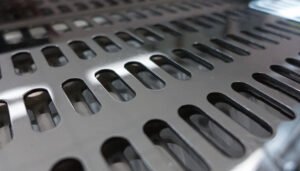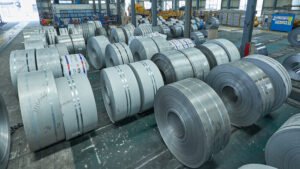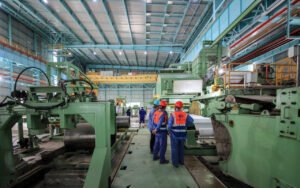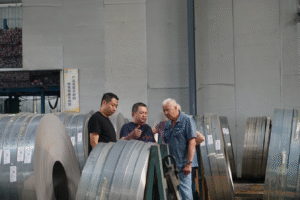Stainless Steel Coil, SUS 304 CSP - 3/4H: A Deep Dive into High-Performance Material
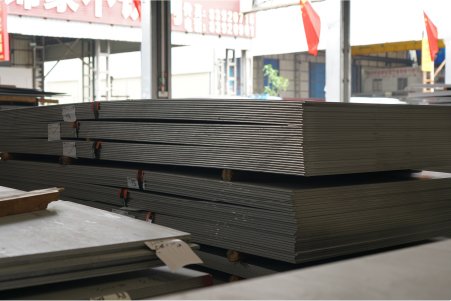
Are you struggling to find a material with the perfect balance of strength and formability for your high-precision components? Using the wrong material often leads to premature component failure, production delays, and escalating costs. SUS 304 CSP - 3/4H stainless steel coil provides the ideal solution.
SUS 304 CSP - 3/4H is a cold-rolled, high-temper austenitic stainless steel. It offers a unique combination of high tensile strength and hardness, derived from the 3/4 hard temper, along with the excellent corrosion resistance inherent to the 304 grade, making it ideal for durable, spring-like components.
The world of stainless steel is vast, but the real engineering magic happens when we move beyond standard grades into specialized tempers. Choosing the right material is a critical decision that directly impacts product quality, lifespan, and cost-effectiveness. The nuances between a 1/2 hard and a 3/4 hard temper can mean the difference between a product that merely functions and one that excels. In this article, we'll explore the specific properties, industry applications, and best practices for SUS 304 CSP - 3/4H.
Material selection is more than just a line item on a spec sheet; it's the foundation of product reliability. I recall a client in the automotive sector who was experiencing field failures with a critical retaining clip. The component, made from a softer temper steel, couldn't withstand the constant vibrations and thermal cycling. By collaborating with them and recommending a shift to our MFY-grade SUS 304 CSP - 3/4H, they eliminated the failures, enhanced their product's reputation, and ultimately secured a larger contract. This kind of success story hinges on a deep, practical understanding of material science. It's not just about what a material is, but what it can do for you. Let's dive deeper into how this specific grade of steel can become your competitive advantage.
What are the key properties of SUS 304 CSP - 3/4H stainless steel coil?
Are you uncertain if SUS 304 3/4H1 possesses the right mechanical and chemical properties for your specific application? This doubt can lead to over-engineering with more expensive alloys or, worse, under-engineering that results in costly product recalls. Understanding its core properties—high strength, robust corrosion resistance, and workable formability—empowers you to make an informed and efficient choice.
The key properties of SUS 304 CSP - 3/4H stainless steel coil are its high tensile strength, typically exceeding 930 MPa, and significant hardness (HV 310-370). This is combined with the excellent, broad-spectrum corrosion resistance characteristic of the 18% chromium, 8% nickel 304 alloy.
These properties are not just abstract numbers on a data sheet; they translate into tangible performance benefits that we see every day in our clients' applications. The journey from a raw coil of steel to a high-performance component is one of controlled transformation. The "CSP" designation, standing for "Cold Rolled Strip for Spring," tells you its intended purpose, while the "3/4H" temper defines its personality—strong and resilient. For instance, a manufacturer of precision electronic connectors we work with depends on this grade's consistency. The high tensile strength ensures their tiny components provide a reliable connection force over millions of cycles, while the corrosion resistance prevents failure even in humid environments. They can't afford the variability that comes with lesser-controlled materials. Their stamping process is aggressive, and the material needs to hold up without fracturing, yet be strong enough to function as a spring. This delicate balance is where SUS 304 3/4H truly shines, offering a bridge between the high formability of softer tempers and the extreme strength (but lower ductility) of full-hard materials. Understanding this balance is the first step to unlocking its potential.
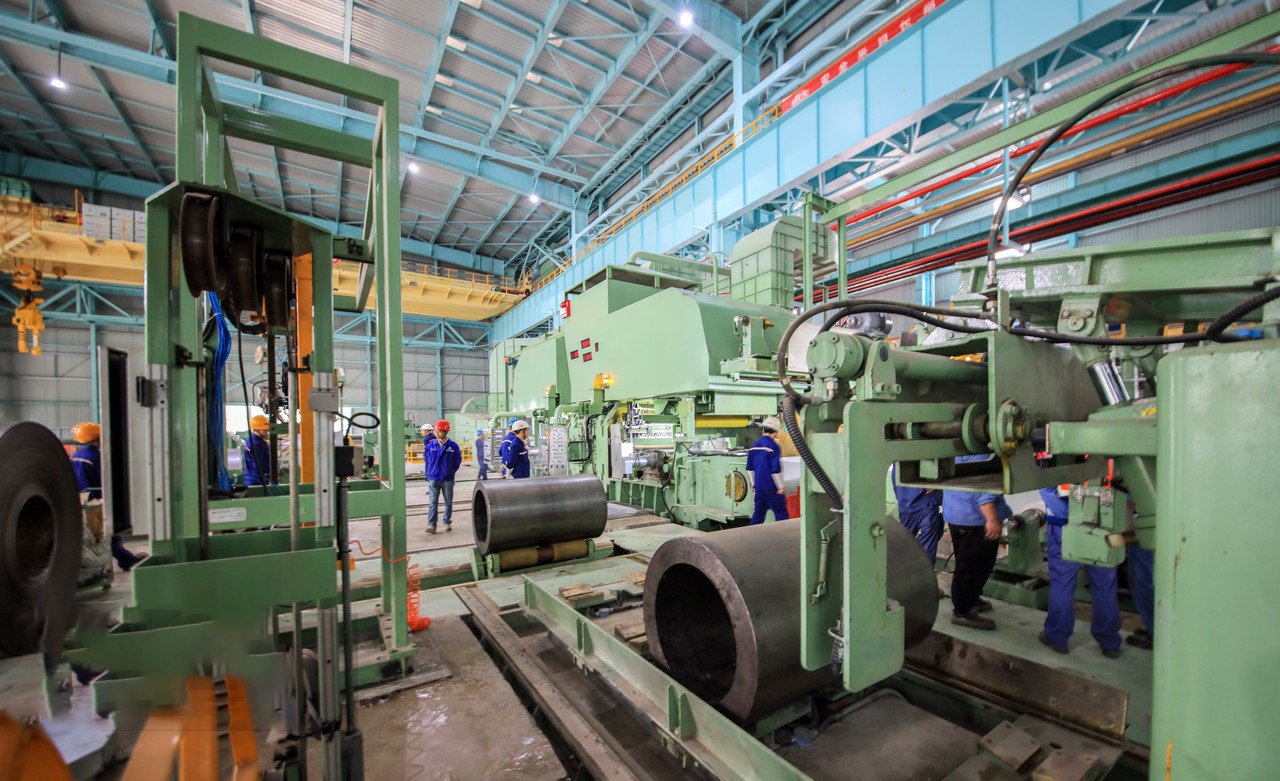
The decision to use this material is a strategic one, and it requires a deeper exploration of its multifaceted character. It's not just about strength or corrosion resistance in isolation, but how these properties interact and what trade-offs they present. For engineers and designers, this knowledge is power—the power to innovate, improve reliability, and optimize costs. We will now dissect the three pillars of its performance: its mechanical strength, its chemical resilience, and its practical formability constraints, providing the detailed perspective needed for effective implementation.
Tensile Strength and Hardness: The Core of Performance
The defining characteristic of the 3/4H temper is its impressive mechanical strength. This is achieved through a process called cold rolling2, where the steel is passed through rollers at a temperature below its recrystallization point. This process deforms and elongates the grain structure of the metal, a phenomenon known as work hardening. The result is a significant increase in both tensile strength—the material's ability to resist being pulled apart—and hardness, its resistance to surface indentation and wear. For SUS 304 3/4H, this translates to a material that can withstand high stress and cyclic loads, making it perfect for spring applications, high-strength fasteners, and durable structural components.
To put this into perspective, let's compare the typical mechanical properties of SUS 304 across different tempers as defined by the JIS G4313 standard. The annealed (soft) state is highly ductile but lacks strength. As we increase the level of cold work from 1/2 Hard to 3/4 Hard and Full Hard (H), the tensile and yield strengths increase dramatically, while the elongation (a measure of ductility) decreases. The 3/4H temper occupies a strategic sweet spot, offering a near-doubling of tensile strength over the annealed state while retaining a usable level of formability for many bending and stamping operations.
| Property | Annealed (Soft) | 1/2 Hard (1/2H) | 3/4 Hard (3/4H) | Full Hard (H) |
|---|---|---|---|---|
| Tensile Strength (MPa) | ≥ 520 | ≥ 780 | ≥ 930 | ≥ 1130 |
| Yield Strength (MPa) | ≥ 205 | ≥ 470 | ≥ 665 | ≥ 880 |
| Hardness (HV) | < 200 | 250 - 310 | 310 - 370 | > 370 |
| Elongation (%) | ≥ 40 | ≥ 6 | ≥ 3 | - |
A great example comes from one of our partners in the industrial equipment sector. They manufacture high-speed conveyor systems where small, durable guide rails are essential for alignment. They were previously using a 1/2H material, but found that over time, the rails would deform under the constant impact and friction. This led to system misalignments and costly downtime for their customers. After consulting with our technical team at MFY, they transitioned to SUS 304 3/4H. The increased hardness provided the necessary wear resistance, and the higher yield strength prevented deformation, significantly extending the maintenance intervals and improving the overall reliability of their equipment.
Corrosion Resistance: Ensuring Durability Across Environments
While strength is paramount, it is the legendary corrosion resistance of Type 304 stainless steel3 that makes it so versatile. This resilience comes from its chemical composition, specifically a minimum of 18% chromium. The chromium reacts with oxygen in the air to form a thin, invisible, and incredibly stable passive layer of chromium oxide on the surface of the steel. This passive layer self-heals when scratched and protects the underlying iron from oxidation, or rust. This is why 304 is a staple in everything from kitchen sinks to architectural cladding.
A common concern is whether the heavy cold working involved in achieving a 3/4H temper compromises this corrosion resistance. While it's true that severe deformation and the introduction of strain-induced martensite can create sites for potential corrosion, the effect on 3/4H temper is generally minimal for most common applications. It maintains excellent resistance in atmospheric conditions, fresh water, and against most food and organic acids. For one of our clients producing components for marine-adjacent environments, we provided salt spray test data (ASTM B117) that demonstrated our MFY 3/4H coils performed comparably to softer tempers, giving them the confidence to specify the stronger material without fearing premature degradation.
This robust chemical resilience is critical in industries where cleanliness and longevity are non-negotiable. Think of a medical device manufacturer we supply. They use SUS 304 3/4H to create clips and springs for surgical instruments. These instruments must endure repeated, harsh sterilization cycles, including autoclaving with high-pressure steam and chemical cleaners. The material cannot corrode, as any surface imperfection could harbor bacteria. Furthermore, it must retain its precise spring properties after these cycles. Here, the combination of high strength from the 3/4H temper and the inert, corrosion-resistant surface of the 304 grade is not just beneficial; it's essential for patient safety.
Formability and Weldability: The Practical Constraints
It is crucial to approach the application of SUS 304 3/4H with a clear understanding of its limitations. The same work hardening that imparts high strength also reduces its ductility. This means it cannot be formed as easily or as intricately as its annealed counterpart. Deep drawing operations, which involve stretching the metal significantly, are generally not feasible with this temper. Attempts to create complex, multi-stage forms may result in cracking or failure. The material is best suited for operations like bending, stamping, and roll forming where the deformation is more controlled.
Engineers must pay close attention to the minimum bending radius. Forcing a tight bend in high-temper material can cause "orange peel" on the outer surface or even fracture the part. As a rule of thumb, the bending radius for 3/4H material should be larger than that for softer tempers. We always advise our clients to conduct forming trials on prototypes before committing to large-scale production. This allows for adjustments in tool design, such as increasing the die clearance and ensuring bending axes are oriented favorably relative to the coil's rolling direction, to mitigate the risk of failure.
Welding this material also requires special consideration. While Type 304 is generally considered to have good weldability, the heat from welding can affect the work-hardened properties in the heat-affected zone (HAZ), causing a localized reduction in strength. More importantly, it can lead to carbide precipitation, where carbon atoms combine with chromium and precipitate at the grain boundaries. This depletes the chromium needed for the passive layer, potentially making the HAZ susceptible to intergranular corrosion. To counter this, low-heat input welding processes like resistance welding or laser welding are highly recommended. If conventional welding is necessary, using a low-carbon "L" grade filler material (like 308L) and implementing a post-weld passivation treatment can help restore corrosion resistance.
SUS 304 3/4H has high tensile strengthTrue
The 3/4H temper process increases tensile strength to ≥930 MPa, making it suitable for high-stress applications.
3/4H temper reduces corrosion resistanceFalse
While cold working affects microstructure, SUS 304 3/4H maintains excellent corrosion resistance comparable to softer tempers in most environments.
How does the 3/4H temper affect the characteristics of stainless steel coil?
Are you wondering how exactly the "3/4H" temper transforms standard stainless steel into a high-performance material? This process is more than just making the steel "harder"; it fundamentally alters its internal structure and performance profile. Understanding this change allows you to leverage its enhanced characteristics for a competitive advantage.
The 3/4H temper significantly increases the tensile strength, yield strength, and hardness of SUS 304 stainless steel coil by cold working it past its annealed state. This process reduces ductility and elongation but vastly improves its fatigue life and spring-like properties.
The transformation from a soft, pliable annealed coil to a resilient 3/4H spring steel is a perfect example of controlled material science at work. This isn't a chemical change, but a physical one, imparted by immense mechanical pressure during the cold rolling process at our MFY facilities. This process is meticulously calibrated, as over-working the steel can make it too brittle, while under-working it won't achieve the desired strength. I often explain to new engineers that they should think of it like forging a sword; the repeated working of the metal aligns its internal structure, creating strength where there was once only potential. This process is what turns a standard, reliable metal into an engineered material capable of performing under extreme stress. We recently assisted a client in the telecommunications industry who needed a new design for a chassis-level EMI shield4. Their previous design used a thicker, softer material. By shifting to a thinner gauge of 3/4H, they achieved the necessary stiffness and spring-contact force with less material, resulting in weight savings, cost reduction, and a more compact final assembly. This kind of optimization is only possible when you understand the profound effects of tempering.
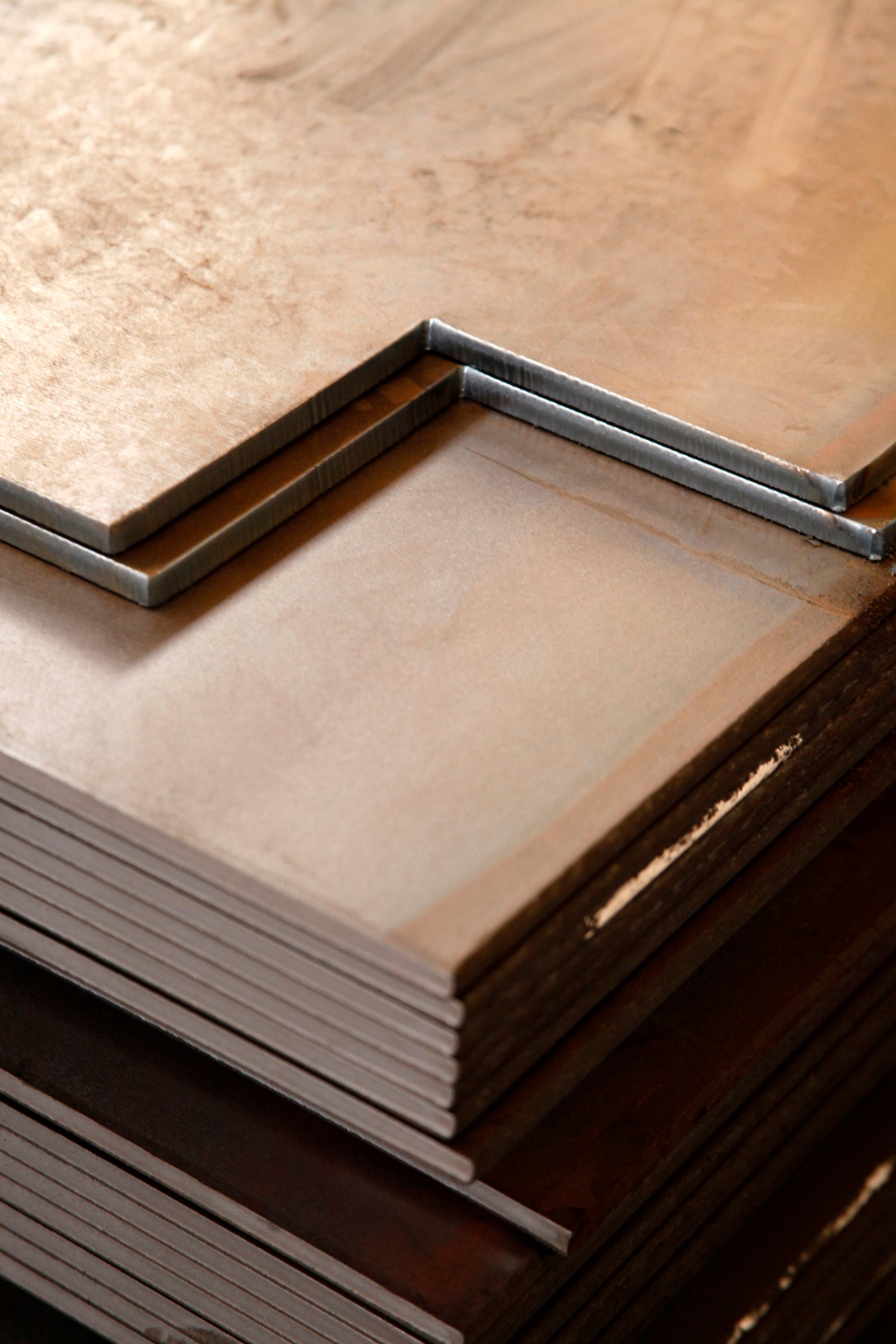
To truly appreciate the value of the 3/4H temper, we must look beyond the surface-level benefit of "strength." The changes are microscopic but have macroscopic consequences for the material's behavior. We will explore how cold working rearranges the crystalline structure of the steel, provide a quantitative comparison to demonstrate the scale of this enhancement, and discuss the secondary—but often critical—effects on properties like magnetism and fatigue resistance. This deeper knowledge is essential for any manufacturer looking to push the boundaries of design and performance.
The Microstructural Transformation: From Annealed to Work-Hardened
In its initial annealed state, austenitic stainless steel like SUS 304 has a crystalline structure composed of equiaxed grains—that is, the grains are roughly equal in all dimensions. This structure allows for a high degree of slip between crystal planes, which is why the material is soft and highly ductile. The process of cold rolling to a 3/4H temper fundamentally alters this. The immense pressure forces the grains to elongate and flatten in the direction of rolling. This deformation creates a dense network of dislocations within the crystal lattice, which act as barriers to further slip, thereby increasing the material's strength and hardness.
This physical rearrangement is the primary mechanism of work hardening. Furthermore, in austenitic stainless steels, this severe strain can trigger a partial phase transformation from the non-magnetic austenite phase to a harder, magnetic martensite phase. This phenomenon, known as strain-induced martensitic transformation5, contributes further to the overall increase in hardness and strength. The degree of this transformation is carefully controlled during the rolling process to achieve the specific properties of the 3/4H temper.
The result is a material with a highly anisotropic microstructure. The properties, particularly formability, can differ depending on the orientation of the stress relative to the direction of rolling. For example, a bend made parallel to the rolling direction is more likely to crack than a bend made perpendicular to it. At MFY, we can provide coils with specific rolling directions marked to help our clients optimize their stamping and forming processes, accounting for this inherent anisotropy to maximize yield and part quality.
Mechanical Property Enhancement: A Quantitative Look
The effect of the 3/4H temper on mechanical properties is not subtle; it is a dramatic and quantifiable enhancement. As detailed in the table in the previous section, the minimum tensile strength for SUS 304 3/4H is 930 MPa, a massive 78% increase over the 520 MPa minimum for the annealed condition. The yield strength—the point at which the material begins to deform permanently—sees an even more profound jump of over 220%, from 205 MPa to 665 MPa. This high yield strength is precisely what gives the material its "spring-back" characteristic, allowing it to deform elastically under load and return to its original shape.
This enhancement, however, comes at the direct expense of ductility. The elongation at break, a measure of how much a material can stretch before fracturing, plummets from over 40% in the annealed state to a mere 3% for 3/4H temper. This trade-off is the single most important consideration for designers. It means that while the material is exceptionally strong, it cannot be used for applications that require the steel to be extensively stretched or drawn.
Consider the manufacturing of a simple diaphragm spring, a common component in automotive clutches and industrial valves. The component requires high elasticity to function, so annealed steel is not an option. A full-hard material might be too brittle to stamp into the required conical shape without cracking. The 3/4H temper provides the perfect compromise: enough strength to provide the required spring force and fatigue life, with just enough residual ductility to allow for the stamping and forming process. This is a classic example of engineering design meeting material science.
Impact on Magnetic Properties and Fatigue Life
A frequently overlooked consequence of cold working austenitic stainless steel is the change in its magnetic properties. Type 304 in its fully annealed state is non-magnetic (its magnetic permeability is close to 1.0). However, the strain-induced martensitic transformation that occurs during cold rolling to the 3/4H temper creates a material that is weakly magnetic. This can be a critical consideration for certain advanced applications. For example, in MRI machines or sensitive electronic sensors, a completely non-magnetic material is required, and 3/4H would be unsuitable. Conversely, for some applications, this slight magnetism can be incidentally useful for handling or sorting parts with magnets.
Perhaps the most significant benefit derived from the high strength of the 3/4H temper is the vastly improved fatigue life. Fatigue failure occurs when a material breaks after being subjected to repeated cycles of loading and unloading (cyclic stress), even if the maximum stress in the cycle is below the material's ultimate tensile strength. Because the 3/4H temper raises the yield and tensile strengths so significantly, the material's endurance limit—the stress level below which it can endure a very large number of loading cycles—is also substantially increased.
I worked with a client who designed high-frequency switching mechanisms for industrial automation. Their initial prototypes, using a softer steel grade, failed after only a few hundred thousand cycles, far short of their ten-million-cycle target. The repeated bending stress was causing fatigue cracks to initiate and propagate. By redesigning the part using our MFY 3/4H coil, they leveraged the material's superior fatigue resistance. The new components easily surpassed their cycle life target, demonstrating a direct and powerful link between the temper of the material and the long-term reliability of the final product.
3/4H temper increases strengthTrue
Cold working to 3/4H temper raises tensile strength by 78% and yield strength by 220% compared to annealed state.
3/4H maintains full ductilityFalse
3/4H temper reduces elongation at break from 40% to just 3%, making the material much less ductile.
What industries benefit most from using SUS 304 CSP - 3/4H stainless steel coil?
Are you wondering if your industry is the right fit for a high-strength material like SUS 304 3/4H? The decision to use a specialized temper can seem complex, but its adoption is often driven by clear needs. Using a standard material where a high-performance one is needed can lead to over-designed, heavy, and unreliable parts.
Industries that require components with high fatigue life, excellent spring properties, and reliable corrosion resistance benefit most. Key sectors include automotive, electronics, medical devices, and precision industrial equipment, where durability and performance are critical for success.
The value of SUS 304 3/4H lies in its ability to solve specific engineering challenges that common materials cannot. As the Global Business Director at MFY, I've had a front-row seat to its application across a fascinating spectrum of industries. It's not a one-size-fits-all solution; it's a precision tool. We see it in the heart of a car's transmission, on the circuit board of a smartphone, and in the hands of a surgeon. Each of these applications leverages the same core properties—strength, spring-back, and cleanliness—but for entirely different end-goals. For example, a construction contractor might use it for a specialized, high-strength façade clip that needs to withstand wind loads for 50 years, while a distributor might stock it for a wide range of customers making everything from textile machinery parts to kitchen appliance springs. The common thread is a demand for a component that will not fail under stress, will not corrode, and will perform its mechanical function repeatably over a long service life. This material is for creators who cannot compromise on reliability.
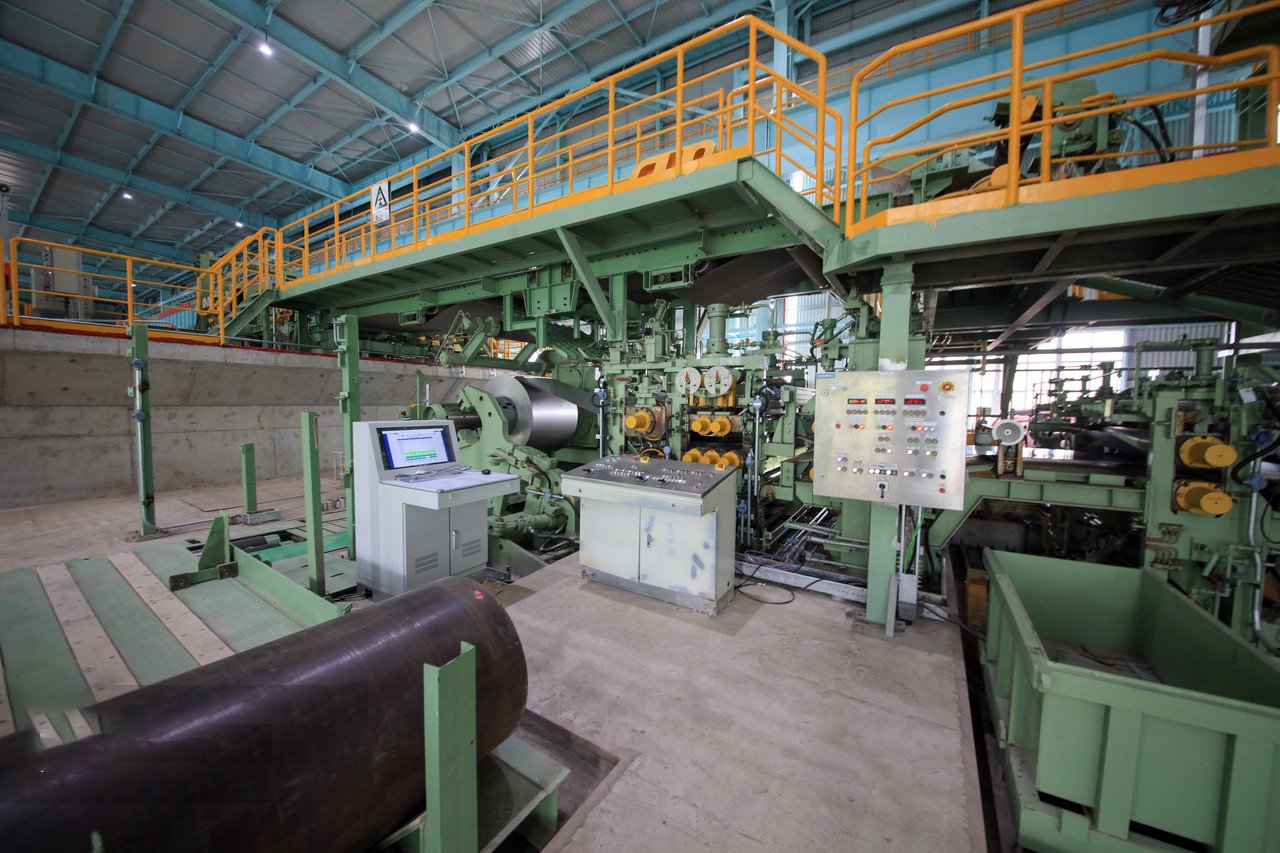
The widespread adoption of this material is not a coincidence; it is a direct response to the increasing demands for smaller, lighter, and more durable products. In the following sections, we will journey through the specific use cases in three key sectors: automotive, electronics, and medical/industrial equipment. By examining real-world examples and the specific problems that SUS 304 3/4H solves in each, we can build a clearer picture of its immense value and help you identify opportunities within your own operations6.
Automotive Sector: Precision Springs and Fasteners
The automotive industry is a primary consumer of high-strength stainless steel, driven by relentless pressure to improve fuel efficiency, safety, and longevity. Every gram of weight saved contributes to better mileage, and every component must withstand years of vibration, temperature extremes, and exposure to road salt and engine fluids. SUS 304 3/4H is a go-to material for a host of critical, yet often unseen, components. This includes diaphragm springs in clutch assemblies, which must flex millions of times without losing their clamping force, and various retaining clips and fasteners used throughout the vehicle, from the engine bay to the interior trim.
A compelling case is the manufacture of piston rings and scraper rings. These components operate in an extremely harsh environment, requiring a combination of wear resistance, constant tension against the cylinder wall, and the ability to withstand high temperatures. A client of MFY who specializes in powertrain components uses our precision-slit 3/4H coils for this very purpose. The material's high yield strength ensures the rings provide a consistent seal, which is critical for engine compression and oil control. Its inherent corrosion resistance protects against acidic blow-by gases, preventing premature failure and maintaining engine performance over the vehicle's lifespan.
Furthermore, with the rise of electric vehicles (EVs), new applications are emerging. High-strength, corrosion-resistant clips and connectors made from 3/4H are used extensively in battery pack assemblies and high-voltage busbar systems. The material's reliability is essential for ensuring the safety and integrity of these critical electrical systems, where a single component failure can have severe consequences.
Electronics and Telecommunications: Connectors, Switches, and EMI Shielding
In the world of electronics, miniaturization is king. As devices become smaller, thinner, and more powerful, the internal components must follow suit. SUS 304 3/4H is an indispensable material in this sector, providing the structural integrity and spring properties that thicker, softer metals cannot offer in such a small form factor. You can find it in battery contacts, where it provides the necessary spring force to ensure a reliable electrical connection, even after thousands of battery changes. It's also used for the tactile metal domes in keyboards and control panels, which must provide a consistent "click" feel and return to their original shape millions of times.
One of the most critical applications is in Electromagnetic Interference (EMI) shielding. Modern electronic devices are packed with high-frequency components that can interfere with one another, degrading performance. To prevent this, engineers design metal "cans" or cages to shield sensitive circuits. A client of ours, a major contract manufacturer for leading smartphone brands, uses our thin-gauge SUS 304 3/4H coils to stamp these shields. The material's stiffness allows for very thin walls, saving precious space, while its spring-like qualities are used to create tiny contact fingers around the edge of the shield, ensuring a continuous ground connection to the main circuit board.
The corrosion resistance of 304 is also vital. Consider a device used in a humid, tropical climate or one that is simply exposed to the natural oils from a user's hands. A standard carbon steel component would quickly corrode, potentially causing a short circuit. The stainless nature of 3/4H ensures long-term reliability and product longevity, protecting the brand's reputation for quality.
Medical and Industrial Equipment: Surgical Tools and High-Wear Components
In the medical field, there is no room for error. Materials must be biocompatible, sterilizable, and absolutely reliable. SUS 304 is a widely accepted medical-grade stainless steel, and its 3/4H temper variant is used for applications that require enhanced strength and durability. This includes surgical instruments like clamps, forceps, and retractors, where the tool must be strong and rigid, yet have a degree of springiness for proper function. The ability to withstand repeated autoclaving (steam sterilization) without corroding or losing its mechanical properties is non-negotiable.
I once visited a customer who manufactures high-end endoscopic surgical tools. They use tiny, intricately formed components made from our 3/4H strip to actuate the jaws of their instruments. The high fatigue life of the material was the primary reason for its selection, as the tool might be actuated thousands of times during a single procedure. The smooth, cleanable surface and corrosion resistance were equally important for meeting stringent FDA and CE regulatory requirements.
Beyond the medical field, general industrial equipment benefits from the same properties. We supply SUS 304 3/4H to manufacturers of textile machinery for parts like heddles and reeds, which must endure high-speed abrasive wear from threads. It's used in printing presses for durable doctor blades and in food processing equipment for cutting blades and conveyor components. In all these cases, the combination of hardness for wear resistance, strength for durability, and the corrosion resistance of stainless steel provides a robust, low-maintenance solution that extends the life of the machinery and reduces costly downtime.
SUS 304 3/4H is used in automotive clutch springsTrue
The material's high fatigue life makes it ideal for diaphragm springs in clutch assemblies that must flex millions of times.
SUS 304 3/4H is unsuitable for medical applicationsFalse
Its biocompatibility and sterilizability make it widely used for surgical instruments that require strength and corrosion resistance.
How can manufacturers optimize the use of SUS 304 CSP - 3/4H in their production?
You've selected SUS 304 3/4H for its superior properties, but are you prepared for the challenges it presents in production? Simply swapping materials without adjusting your process can lead to tool damage, high scrap rates, and lost productivity. Optimizing your manufacturing process is key to unlocking the full economic and performance benefits.
To optimize the use of SUS 304 3/4H steel, manufacturers must focus on robust tooling design, precise process control for stamping and forming, and leveraging modern simulation software. This proactive approach minimizes tool wear, reduces springback variance, and accelerates development.
From my experience visiting countless manufacturing floors across Asia and beyond, I've seen the difference between struggling with a material and mastering it. The companies that succeed with high-temper steels are those that treat it with the respect it deserves. They don't just feed a coil into a press and hope for the best. They invest in the right tool steels, they meticulously fine-tune their lubrication and press speeds, and they embrace technology to predict how the material will behave. It's a holistic approach. I often tell my clients at MFY that the cost of a slightly more expensive tool steel or a day spent on simulation is a fraction of the cost of a week of unplanned downtime due to a shattered die. By viewing the manufacturing process as a system to be optimized, you can turn a challenging material into a source of significant competitive advantage.

Successfully integrating a high-performance material like SUS 304 3/4H into your production line is an engineering challenge that pays dividends in product quality and cost-efficiency. This requires a focused effort in three critical areas. We will first examine the crucial role of tool steels like D2 or M27, then delve into the specifics of controlling the stamping and forming process itself, and finally, explore how modern digital tools like simulation can streamline the entire workflow, saving time and resources.
Tooling and Die Design for High-Temper Materials
The first rule of working with a strong, hard material is that your tools must be stronger and harder. Stamping SUS 304 3/4H with tooling made from common tool steels intended for mild steel is a recipe for disaster. The high forces required will lead to rapid wear, chipping, and catastrophic failure of the die set. Manufacturers must invest in high-performance cold-work tool steels, such as D2 or M2 grades, which offer the necessary compressive strength and abrasion resistance to withstand the punishment of forming high-strength stainless steel.
Die clearance—the gap between the punch and the die—is another critical parameter. For 3/4H material, the clearance needs to be significantly larger than for soft steels, typically around 10-15% of the material thickness per side. Insufficient clearance will result in excessive shearing forces, creating a burnished, work-hardened edge on the part and putting immense strain on the press and tooling. Proper clearance allows the material to fracture cleanly, resulting in a better-quality part and longer tool life.
Springback is the most significant challenge in forming high-temper steel. Due to its high yield strength, the material has a strong tendency to return to its original shape after being bent. Tooling must be designed to compensate for this by "over-bending" the part. For example, to achieve a final 90-degree bend, the tool may need to bend the part to 95 or even 100 degrees. The exact amount of over-bend required depends on the material thickness, bend radius, and tooling geometry, and often requires several iterations to perfect.
Stamping and Forming Process Control
Once the right tooling is in place, success shifts to controlling the process itself. Proper lubrication is non-negotiable. The high contact pressures between the tooling and the workpiece can easily lead to galling, a form of adhesive wear where material from the workpiece friction-welds itself to the tool surface. This damages both the tool and subsequent parts. Using a high-pressure, chlorine-free lubricant or a specialized dry-film coating is essential to create a stable barrier and ensure smooth material flow.
Press speed must also be carefully managed. While the goal is always to maximize output, running the press too fast when forming 3/4H can be counterproductive. Higher speeds increase heat and stress on the tooling, accelerating wear. For challenging forms, reducing the press speed can give the material more time to flow without fracturing and can significantly improve the consistency of the parts. It's a balance between speed and stability.
Monitoring the process is key to maintaining quality over a long production run. As tools naturally wear, dimensions can drift and burr formation can increase. Implementing a robust quality control plan, with regular checks on critical part dimensions and visual inspection for defects, is crucial. For high-volume production, in-die sensors that monitor force and temperature can provide real-time feedback, allowing for adjustments to be made before thousands of bad parts are produced. This data-driven approach transforms the process from reactive to proactive.
Leveraging Simulation and Prototyping
In the past, optimizing a forming process for a material like SUS 304 3/4H was a painful and expensive process of trial and error. A tool would be designed, built, and tested. If it didn't work, it would be modified or remade, costing weeks of time and significant capital. Today, manufacturers can leverage Finite Element Analysis (FEA) simulation software8 to virtually prototype the entire forming process. This technology allows engineers to predict material flow, identify areas of high stress or potential cracking, and accurately estimate springback before a single piece of tool steel is ever cut.
By inputting the precise mechanical properties of the material—which we at MFY can provide for our specific coils—and the geometry of the tool, the software can simulate the stamping operation in a matter of hours. This allows for rapid iteration and optimization of the tool design in a digital environment. Engineers can experiment with different bend radii, die clearances, and over-bend angles to find the optimal setup, drastically reducing the time and cost of physical prototyping.
For instance, a customer in the equipment integrator space was developing a complex bracket with multiple bends. Their initial manual calculations for springback were incorrect, and their first prototype was out of spec. Instead of another round of physical trial-and-error, we worked with them to input our material data into their FEA software. The simulation immediately highlighted the problematic areas and predicted the correct over-bend values. Their second physical prototype, based on the simulation results, was perfect, saving them an estimated three weeks of development time. This is the power of combining high-performance materials with high-performance digital tools.
Tooling must compensate for springbackTrue
High-temper steels like SUS 304 3/4H require tooling to over-bend parts to account for material's tendency to return to original shape.
Mild steel tooling works for SUS 304False
SUS 304 3/4H requires high-performance tool steels (D2/M2) as mild steel tooling would rapidly wear or fail.
What best practices should be followed when handling and processing SUS 304 CSP - 3/4H stainless steel coil?
You're ready to process your high-strength coil, but are your handling procedures up to the task? Mishandling SUS 304 3/4H can not only damage expensive material but also pose significant safety risks. A disciplined approach from receiving to finishing is essential for both safety and quality.
Best practices for SUS 304 3/4H stainless steel coil handling include using robust, well-maintained uncoiling equipment to manage stored energy safely, implementing strict contamination prevention to protect the surface, and employing appropriate post-processing techniques like deburring and passivation to ensure final part integrity.
As someone who has walked through numerous steel processing facilities, I can attest that the companies with the best safety records and the highest quality output are those with the most disciplined handling procedures. High-strength steel coil stores a tremendous amount of energy, like a giant, wound-up clock spring. I've heard stories from other suppliers of entire coils dangerously unfurling because a band was cut improperly. At MFY, we prioritize educating our clients on these risks. Furthermore, the pristine, corrosion-resistant surface of stainless steel is its greatest asset. Protecting that surface from the moment it arrives at your facility to the moment the final part is shipped is a fundamental practice that separates the best manufacturers from the rest. It's about maintaining the value that was engineered into the material from the very start.
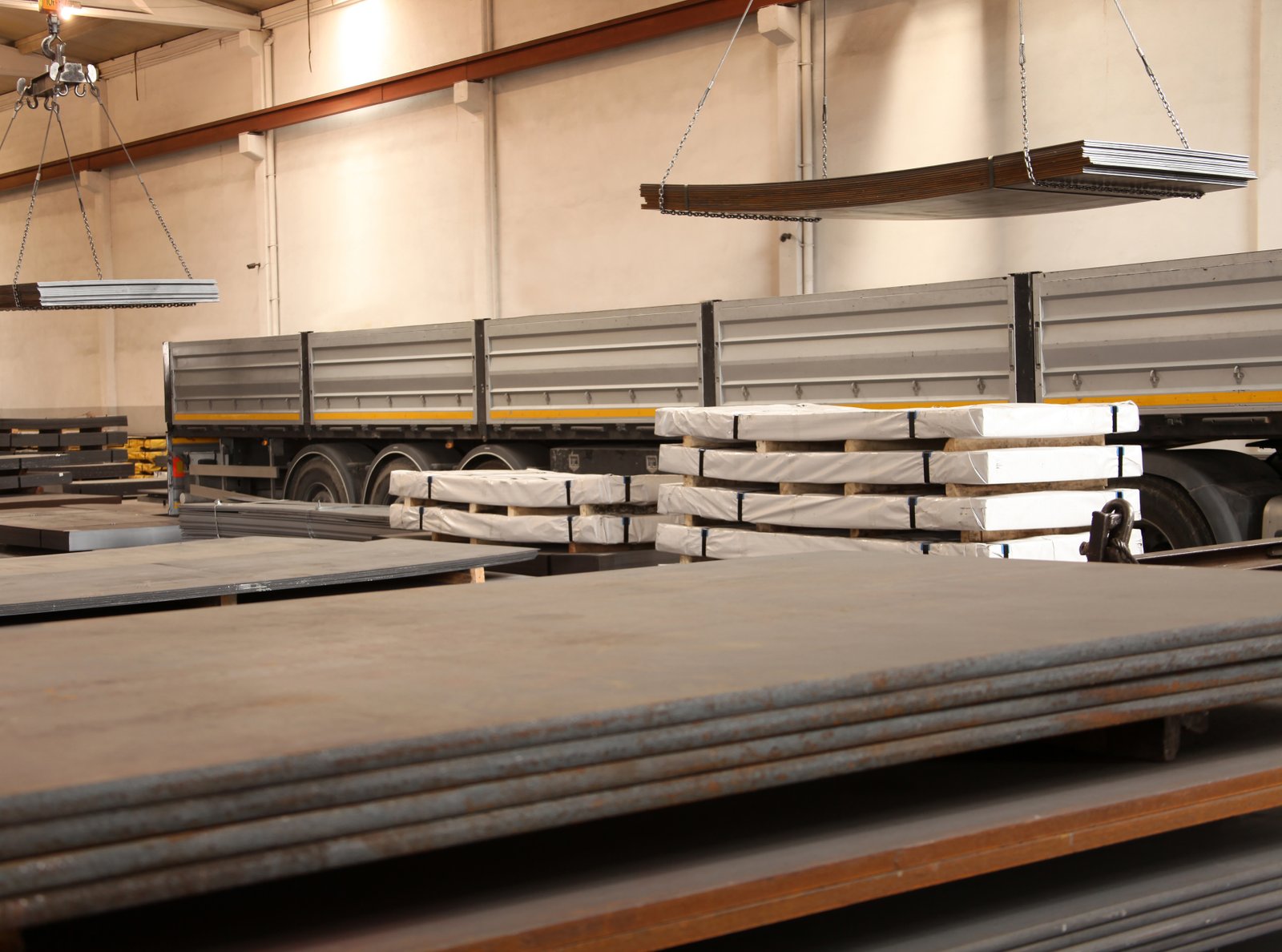
Adhering to best practices is not about adding bureaucracy; it's about mitigating risk, ensuring safety, and preserving the quality of your final product. The journey of a stainless steel coil through a production facility has three critical stages, each with its own set of best practices. We will first cover the paramount importance of safe uncoiling and handling, then discuss strategies for surface protection and contamination prevention, and conclude with essential post-processing and cleaning techniques that guarantee a finished part meets all specifications.
Safe Uncoiling and Handling Procedures
The single most critical aspect of handling high-strength steel coil is managing the immense stored energy. A coil of SUS 304 3/4H is under significant internal stress. If the banding straps are removed incorrectly or if the coil is not properly secured in an uncoiling mandrel, it can "clock-spring9" violently. This sudden release of energy can cause severe injury to personnel and damage to nearby equipment. It is imperative to use heavy-duty, well-maintained uncoiling equipment with a robust hold-down arm and peeler system to control the leading edge of the coil.
All personnel involved in handling these coils must be trained on the specific risks and procedures. This includes wearing appropriate Personal Protective Equipment (PPE), such as cut-resistant gloves, safety glasses, and steel-toed boots. The area around the uncoiling operation should be clearly marked and kept free of unnecessary foot traffic. Never, under any circumstances, should a banding strap be cut unless the coil is securely loaded onto a mandrel or safely cradled.
Once uncoiled, the flat strip also presents handling challenges. The edges can be extremely sharp, and due to the material's strength, it will resist bending and can whip back unexpectedly if not handled with care. Using proper material handling equipment to feed the strip into the press is essential to maintain control and ensure operator safety.
Surface Protection and Contamination Prevention
The corrosion resistance of stainless steel relies on its passive surface layer. This layer can be compromised by contamination, particularly from free iron. If carbon steel tools, chains, forklift tines, or grinding dust come into contact with the stainless steel surface, iron particles can become embedded. In the presence of moisture, these particles will rust, leading to unsightly surface staining and potentially initiating pitting corrosion10. This is a phenomenon known as "rouging."
To prevent this, a strict policy of material segregation must be enforced. Ideally, stainless steel should be stored and processed in a dedicated area, away from carbon steel operations. All tools, work surfaces, and handling equipment used for stainless steel should be made of non-ferrous materials or be dedicated solely for stainless steel use. If this is not possible, tools should be thoroughly cleaned before use. Many of our clients specify that coils from MFY be delivered with a protective PVC or PE film on the surface, which provides excellent protection against scratches and contamination during handling and stamping. This film is then removed after the final forming operations are complete.
Storage conditions are also important. While stainless steel is robust, it should be stored in a clean, dry environment to prevent water spots or contamination from airborne industrial pollutants. Coils should be kept off the floor on clean, wooden pallets or dedicated racking systems.
Post-Processing and Cleaning Techniques
After a part has been stamped or formed, it often requires secondary processing. A common step is deburring to remove the sharp edges left by the blanking or punching operation. For a high-hardness material like 3/4H, this burr can be particularly sharp and hard. While mechanical deburring methods like tumbling or vibratory finishing are effective, the media used must be non-metallic (e.g., ceramic or plastic) to avoid iron contamination.
Once all mechanical processing is complete, a final cleaning and passivation step is highly recommended, especially for critical applications in the medical, food, or electronics industries. Cleaning removes any residual lubricants, dirt, or shop oils from the surface. Passivation is a chemical treatment, typically involving a bath in nitric or citric acid, which removes any free iron from the surface and enhances the natural chromium-oxide passive layer. This final step ensures the component has the maximum possible corrosion resistance.
It is crucial to follow the correct procedures for passivation, including proper concentration, temperature, and immersion time, followed by thorough rinsing with clean water. An improperly performed passivation can be ineffective or even damage the parts. For many of our clients, particularly those in regulated industries, we provide detailed guidance and partner with chemical suppliers to ensure they achieve a perfectly clean and passive surface on every component.
SUS 304 3/4H coils store dangerous energyTrue
High-strength steel coils contain significant internal stress that can violently release if improperly handled, posing serious safety risks.
Carbon steel tools are safe for stainlessFalse
Carbon steel tools can contaminate stainless steel surfaces with iron particles that lead to rust and corrosion, compromising the material's properties.
Conclusion
Ultimately, SUS 304 CSP - 3/4H is a strategic material choice for demanding applications. Its unique blend of high strength, spring properties, and corrosion resistance offers a distinct performance advantage. Mastering its use through optimized production and handling is key to gaining a competitive edge.
-
Compare the mechanical properties and ideal applications of SUS 304 3/4H with other tempers ↩
-
Understand how cold rolling strengthens and hardens metals like SUS 304 3/4H ↩
-
Learn how the chemical composition of 304 stainless steel prevents rust ↩
-
Discover the benefits of using thinner gauge 3/4H coils for EMI shielding designs ↩
-
Understand how cold working induces magnetic properties and strengthens stainless steel ↩
-
Learn how SUS 304 3/4H stainless steel offers strategic benefits across various industries ↩
-
Learn the importance of using specific tool steels for forming hard stainless steels. ↩
-
Understand how FEA software can optimize tool design and reduce prototyping costs. ↩
-
Learn about the risks and management of sudden energy release in coiled steel ↩
-
Understand the causes and prevention methods for pitting corrosion in stainless steel ↩
Have Questions or Need More Information?
Get in touch with us for personalized assistance and expert advice.

